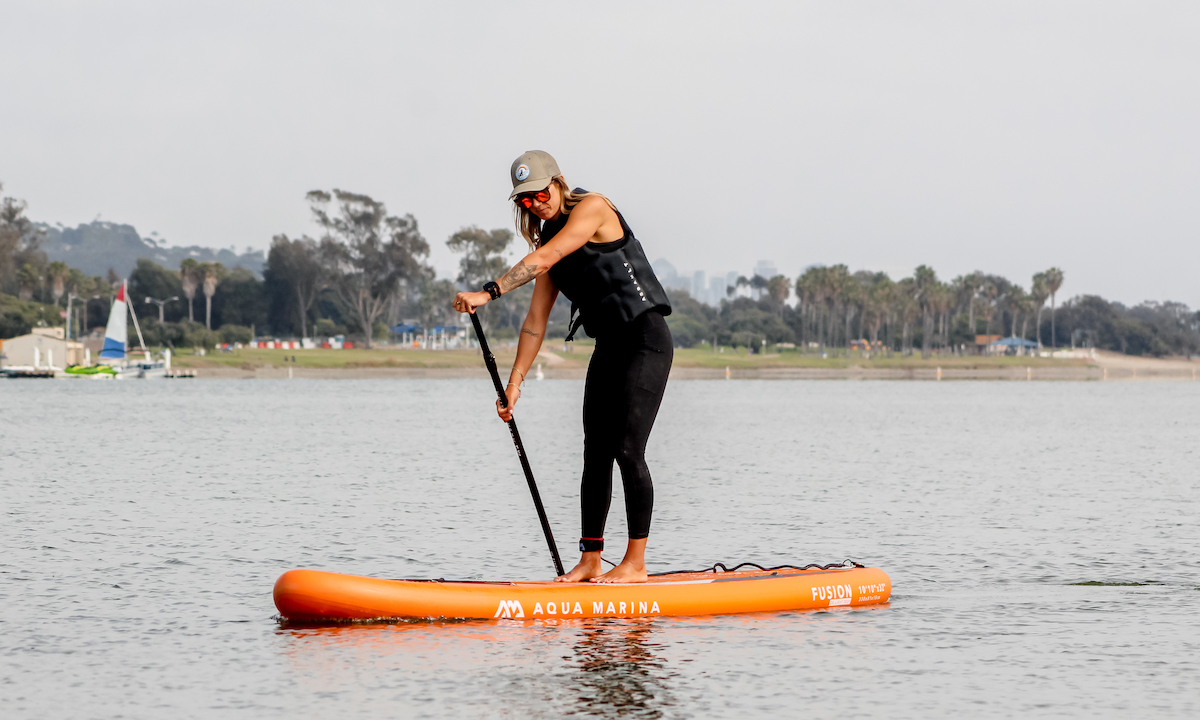What Type of Strength Do You Need to Excel at SUP?
- Written by Jennifer Dawson
- Published in Tips
- Comments::DISQUS_COMMENTS
A study published in the journal BMC Sports Science, Medicine and Rehabilitation has found that even an absolute beginner who takes up SUP can make significant gains in their cardiovascular and musculoskeletal fitness. SUP involves similar biomechanics involved in dragon boat racing, reported the researchers, and it required a rhythmic alternative paddle to enable the board to surge through the water. The main muscles used to achieve this goal include the entire trunk and the gluteal and leg muscles. These are called to work hard to counter the rotational forces from the pull involved in each stroke.
 Photo Copyright Supconnect, featuring Aqua Marina Fusion
Photo Copyright Supconnect, featuring Aqua Marina Fusion
SUP Practice Strengthens Required Muscles
Although various muscles are involved in propelling an SUP forward, even absolute beginners can obtain enjoyment in this sport, making significant improvements in the strength of these major muscle groups as they go along. However, SUPers can benefit from honing the strength of these specific muscle groups, complementing their practice with strength exercise at the gym. Trusted strength machinery and free weights can be relied upon to strengthen the core, glutes, and quadriceps. When choosing the specific weights for this aim, prioritize safety and quality. Ensure that the weights and machines you use are stable and that they enhance your ability to perform your workout with the correct technique.
Strengthening the Gluteal Muscles
There are various exercises for the gluteal muscles, which comprise three muscles: the gluteus maximus, medius, and minimus. Your glutes enable you to extend and rotate your hip and they enable you to stand, providing your hip with the stability it needs. Optimal glute strengthening exercises include barbell hip thrusts, front squats, and deadlifts. If you are new to these exercises, enlist the help of a personal trainer or physiotherapist. They often involve large weights, so it is important that you perform them correctly and avoid injury.
 Photo Courtesy: Slingshot
Photo Courtesy: Slingshot
Powering Up Your Legs
Squats are a classic exercise when it comes to increasing the strength of quadriceps. Lunges, plank leg lifts, and knee tucks on a stability ball will enhance tone and strength. You can also try doing box jumps on a plyometric box. The latter, also known as a plyo or jump box, is a box or platform that comes in a wide array of sizes. Plyo boxes are made of specifically durable materials, which afford optimal stability. They are usually used for jump training, which focuses on building explosive power. Muscles are moved from the extension to contraction phase rapidly and repetitively. By jumping upon a box repeatedly, you can strengthen your leg power dramatically.
Exercises for the Trunk
Having great core stability is important if you want to spend a few hours on your SUP board. When choosing exercises for your trunk or core, choose those that are performed in a standing position, to mimic the type of movements you may need to perform atop your SUP. Embrace exercises that require you to move in different directions (such as front and back, left to right, and rotating on your center). Just a few exercises to start off with include the standing trunk rotation, which involves holding a medicine ball with your feet hip-width apart, and moving the ball from one side of your body to the other. While you are performing this exercise, you should hold the ball close to your body with both hands and your elbows bent. This exercise is a bit like the classic “Russian twist,” except that you are standing instead of sitting.
 Photo courtesy: Surftech
Photo courtesy: Surftech
SUP can be enjoyed by beginners as well as seasoned professionals. It has been proven to strengthen various major muscle groups. These include the trunk, legs, and gluteals, all of which can be further strengthened during your gym workout.
For more SUP fitness and nutrition articles, click HERE.

Jennifer Dawson
Jennifer Dawson is an experience freelance writer who specializes in food and nutrition. Working in fitness marketing previously gave her a good feel for the industry and since going freelance she has been able to explore her preferred topic areas such as diet, nutrition and food. Outside of work, Jen enjoys traveling, swimming and spending time with her young family.
Email This email address is being protected from spambots. You need JavaScript enabled to view it.





